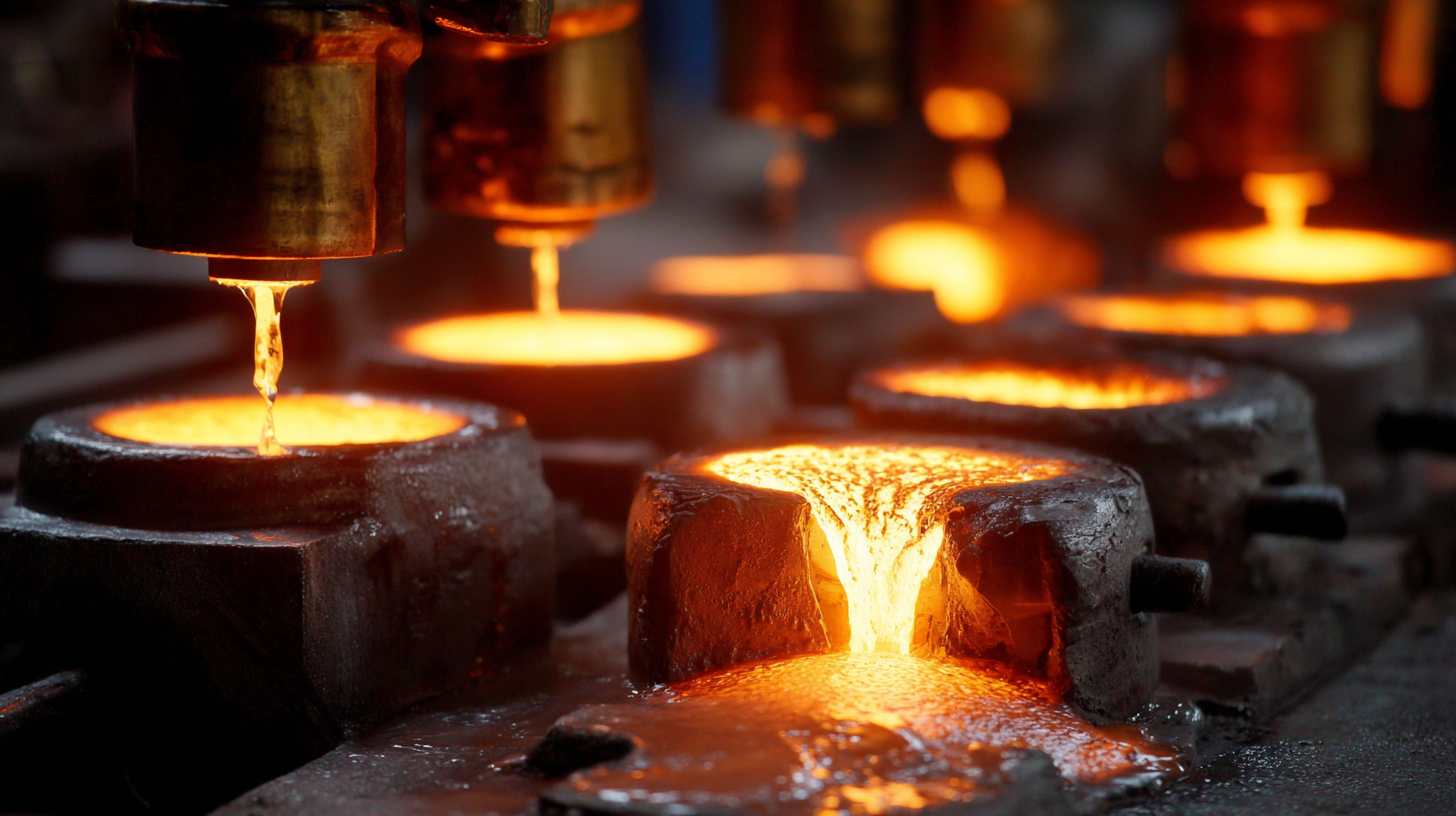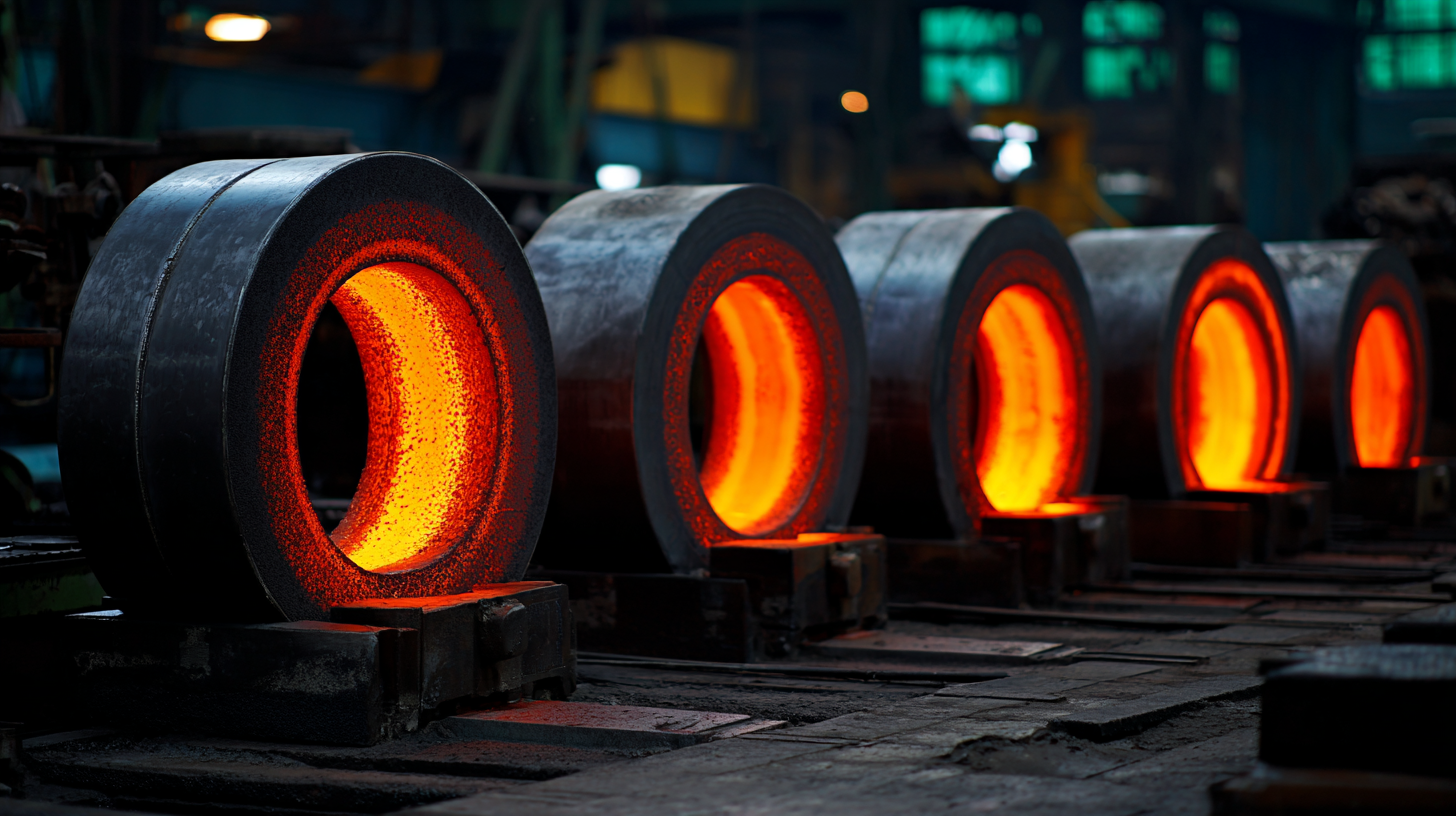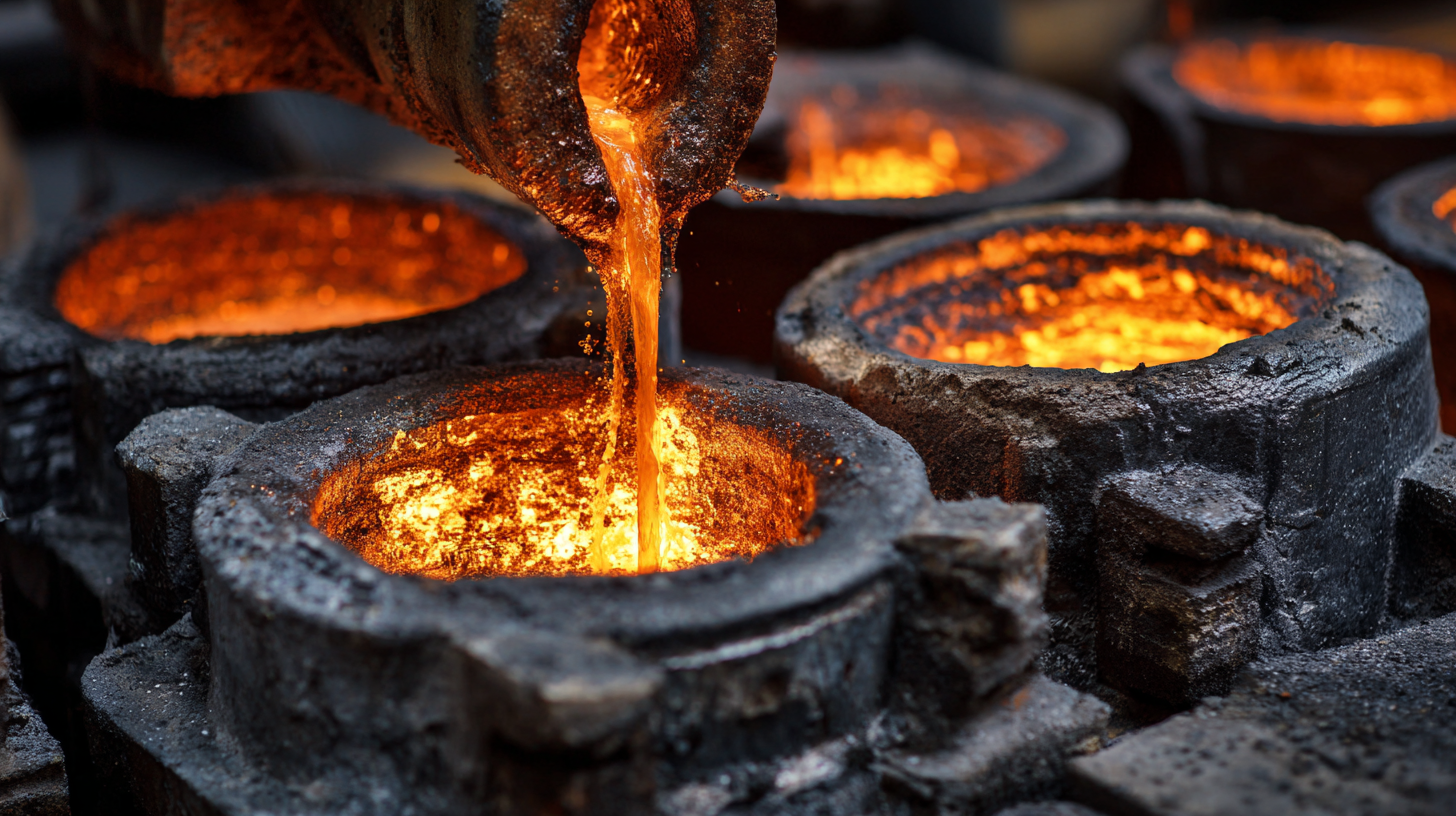In the realm of industrial manufacturing, precision and quality are paramount, making Lost Wax Steel Casting a preferred choice for many applications. According to a recent report by MarketsandMarkets, the global investment casting market is projected to reach $20.55 billion by 2026, underscoring the growing demand for advanced casting techniques like Lost Wax Steel Casting. This method not only offers intricate detail and complex geometries but also ensures superior surface finish and dimensional accuracy, essential for various industries ranging from aerospace to automotive. As manufacturers seek to enhance operational efficiency and reduce production costs, embracing Lost Wax Steel Casting can significantly optimize their production processes, enabling the creation of high-performance components that meet stringent industry standards. Thus, understanding the advantages of this casting technique is crucial for industries aiming to stay competitive and innovative.

Lost wax steel casting, also known as investment casting, has become an essential method in various industries due to its precision and versatility. This process involves creating a wax model of the desired part which is then coated in a ceramic shell. Once the shell hardens, the wax is melted away, leaving a cavity for molten steel to fill. This technique allows for intricate designs and complex geometries that are difficult to achieve with conventional casting methods.
Recent analyses indicate that demand for advanced manufacturing techniques such as lost wax casting is on the rise, particularly as industries look for more efficient and cost-effective solutions. The global market for these industrial applications is expected to expand significantly, with reports noting a projected annual growth rate of 7.2% through the next decade. Companies leveraging this technology benefit from reduced material waste and enhanced product strength, making it an attractive option for the aerospace, automotive, and medical sectors.
Furthermore, as industries continue to innovate, the adaptability of lost wax steel casting is proving advantageous. For instance, firms producing high-performance components can utilize this method to achieve tighter tolerances and increased durability, aligning with the newest trends in manufacturing. Such advancements underscore the relevance of lost wax casting as an indispensable asset in meeting modern industrial needs.
Lost wax steel casting, also known as investment casting, has become a cornerstone of precision manufacturing across various industries, from aerospace to medical devices. One of the primary benefits of this method is its exceptional accuracy. According to a report by the Investment Casting Institute, parts produced through lost wax casting can achieve tolerances as tight as ±0.3 mm, making it ideal for components requiring intricate details and fine features. This precision reduces the need for extensive machining, leading to both time and cost savings in the production process.

Another key advantage is the versatility offered by lost wax steel casting. The process can accommodate a wide range of alloy compositions, enabling manufacturers to produce complex geometries without compromising on material properties. The American Foundry Society notes that approximately 70% of all investment cast components are made from ferrous alloys, underscoring its popularity in creating robust parts that withstand demanding applications. Additionally, the ability to produce high-quality finishes directly from the mold streamlines the manufacturing pipeline, further bolstering production efficiency and reducing waste.
When it comes to industrial production, cost efficiency is paramount. One of the standout methods that provide significant savings is lost wax steel casting. This technique, known for its precision and excellent material utilization, allows manufacturers to produce high-quality components at a lower overall cost. By reducing wastage during the manufacturing process and streamlining production, industries can enjoy the advantages of economies of scale. As production volumes increase, the per-unit costs decrease, making lost wax casting an attractive option for companies looking to optimize their budget.
Moreover, lost wax casting fits seamlessly into mass production environments. It enables the creation of detailed and standardized products rapidly through automated processes, which not only saves labor costs but also enhances consistency across batches. As businesses seek to improve their efficiency and output, implementing advanced techniques like lost wax steel casting can lead to higher productivity levels. With technologies constantly evolving, industries can look forward to further advancements that will improve the casting process, driving down costs even further while maintaining high standards.
| Advantages | Description | Cost Efficiency | Examples of Savings |
|---|---|---|---|
| Precision | Offers high dimensional accuracy and improved finish. | Reduces the need for extensive machining. | Savings of up to 30% on machining costs. |
| Material Utilization | Minimizes waste due to the ability to work with complex shapes. | Cost-effective use of materials. | Reduction in scrap costs by 15%. |
| Flexibility | Supports a wide range of alloys, allowing tailored solutions. | Enables production of customized parts. | Potential to save 10% on custom tooling. |
| Reduced Labor Costs | Simplifies production processes. | Less manual handling and fewer labor hours required. | Labor cost reductions of around 20%. |
| Shorter Lead Times | Fast production cycles due to efficient processes. | Enhances overall productivity. | Faster turnarounds, saving approximately 25% in production time. |
The versatility of lost wax steel casting allows for intricate designs and tailored solutions that meet specific industrial needs. According to a report by Mordor Intelligence, the global investment casting market is projected to reach USD 19.23 billion by 2026, growing at a CAGR of 6.2%. This growth highlights the increasing demand for customized casting solutions across various sectors, including aerospace, automotive, and oil and gas. The lost wax casting process offers superior precision and the ability to create complex geometries that are challenging to achieve with traditional casting methods.
One of the key advantages of steel castings produced through the lost wax process is their adaptability. Manufacturers can manipulate factors such as alloy composition, mold design, and finishing techniques to produce components that meet stringent specifications for strength, weight, and durability. According to a study by Research and Markets, 47% of manufacturers cite the ability to customize designs as a key factor in choosing lost wax steel casting over other methods. This flexibility not only enhances product performance but also streamlines production processes, allowing industries to respond quickly to evolving market demands.
 In today's industrial landscape, the strength and durability of materials are paramount, especially when it comes to casting processes.
Best lost wax steel casting stands out as an excellent choice due to its superior quality assurance mechanisms.
This technique allows for intricate designs while ensuring that each component can withstand rigorous operational demands.
The precision provided by lost wax casting not only enhances the visual appeal of the final products but also contributes to their overall strength, making them reliable for various industrial applications.
In today's industrial landscape, the strength and durability of materials are paramount, especially when it comes to casting processes.
Best lost wax steel casting stands out as an excellent choice due to its superior quality assurance mechanisms.
This technique allows for intricate designs while ensuring that each component can withstand rigorous operational demands.
The precision provided by lost wax casting not only enhances the visual appeal of the final products but also contributes to their overall strength, making them reliable for various industrial applications.
Quality assurance in lost wax steel casting is essential, as it involves rigorous testing methodologies that verify the integrity of the materials used.
Advanced techniques, similar to those utilized in aerospace manufacturing, are employed to ensure that components meet specific performance standards.
The meticulous attention to detail in the casting process enables manufacturers to detect potential defects early, thereby reinforcing the durability and longevity of the final products.
As industries continue to evolve, the significance of quality assurance cannot be overstated, as it ultimately leads to enhanced product performance and customer satisfaction.
